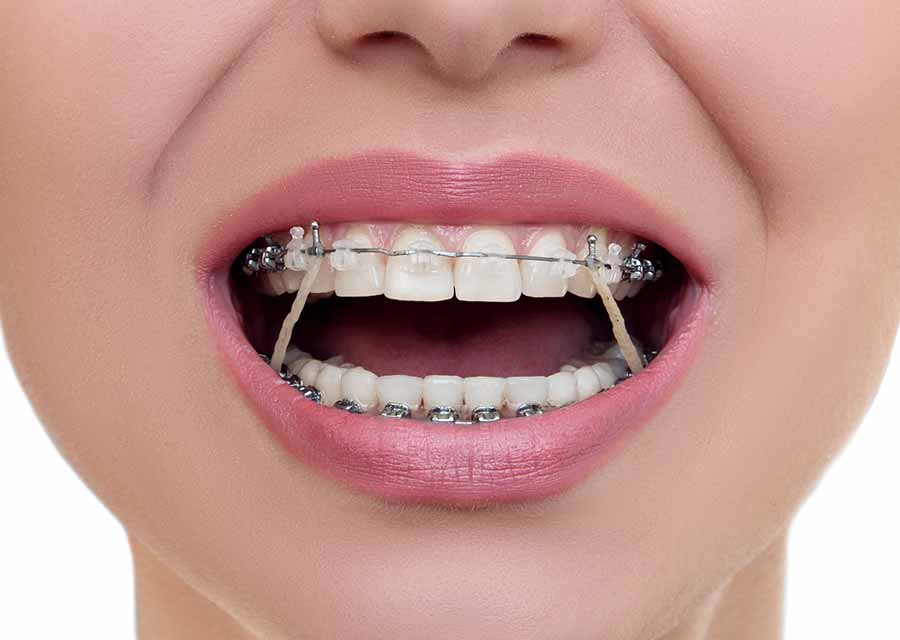
Orthodontic elastics, also known as rubber bands, are small stretchy loops of latex that help move teeth into proper alignment during orthodontic treatment. Their purpose is to create additional force for tooth movement in any of the three dimensions—up or down, back and forth, side to side—that is more difficult using braces alone.
Elastics attach to tiny hooks on traditional braces or buttons created for this purpose on clear aligners (Invisalign®). The bands may stretch from the upper jaw to the lower jaw or be connected to teeth in the same jaw. These connection points are carefully determined to create the desired movement of individual teeth or groups of teeth while preventing other teeth from moving out of alignment.
Likewise, the rubber band must be stretched in a precise pattern. For example, it may hook to one upper tooth and two lower teeth, creating a triangle shape. It may attach to four teeth, creating a box pattern. Or it may simply stretch between one upper tooth and one lower tooth on a diagonal. The important thing is that you attach them exactly as instructed. Wearing them incorrectly can prevent the teeth from moving or create unwanted movement. If you have any questions about how to attach your elastics correctly, please don’t hesitate to ask.
Important Things to Remember About Rubber Bands
The most important thing to remember is that treatment with orthodontic elastics can only be successful if the rubber bands are worn continuously as directed. They should only be removed for eating or brushing your teeth. If you wear Invisalign, you are already used to a similar type of routine. If you wear traditional braces, however, assuming this new level of responsibility for the success of your own treatment may be new. But it will be well worth the extra effort!
When you first start to wear elastics, you may experience some soreness. This is normal and should go away in a few days. Please do not remove the elastics to relieve the soreness — this will only prevent your teeth from moving as desired while delaying you from reaching the point when you will feel better! Likewise, don’t double up on elastics, thinking this will move your teeth faster. It won’t! The various stages of your treatment have been precisely planned and designed specifically for you to give you the best smile possible.
Here are some other helpful tips:
- Carry extra elastics with you at all times. That way, if one breaks or gets lost, you’ll be ready.
- If you run out of elastics, don’t wait until your next appointment to get more; stop into the office right away.
- Always wash your hands before putting in or taking out elastics.
- Contact us if you have any questions about elastics or any other aspect of your treatment.